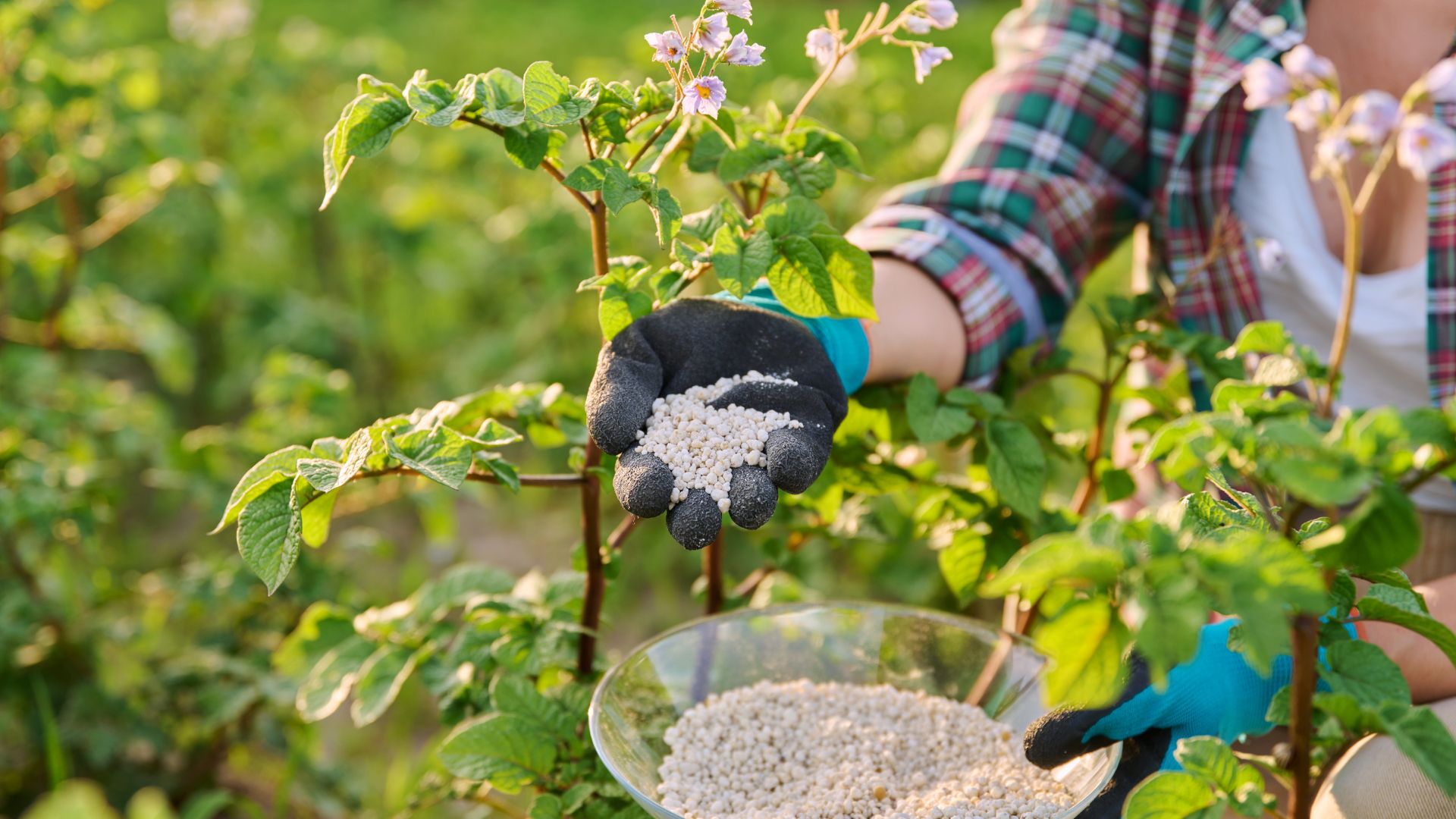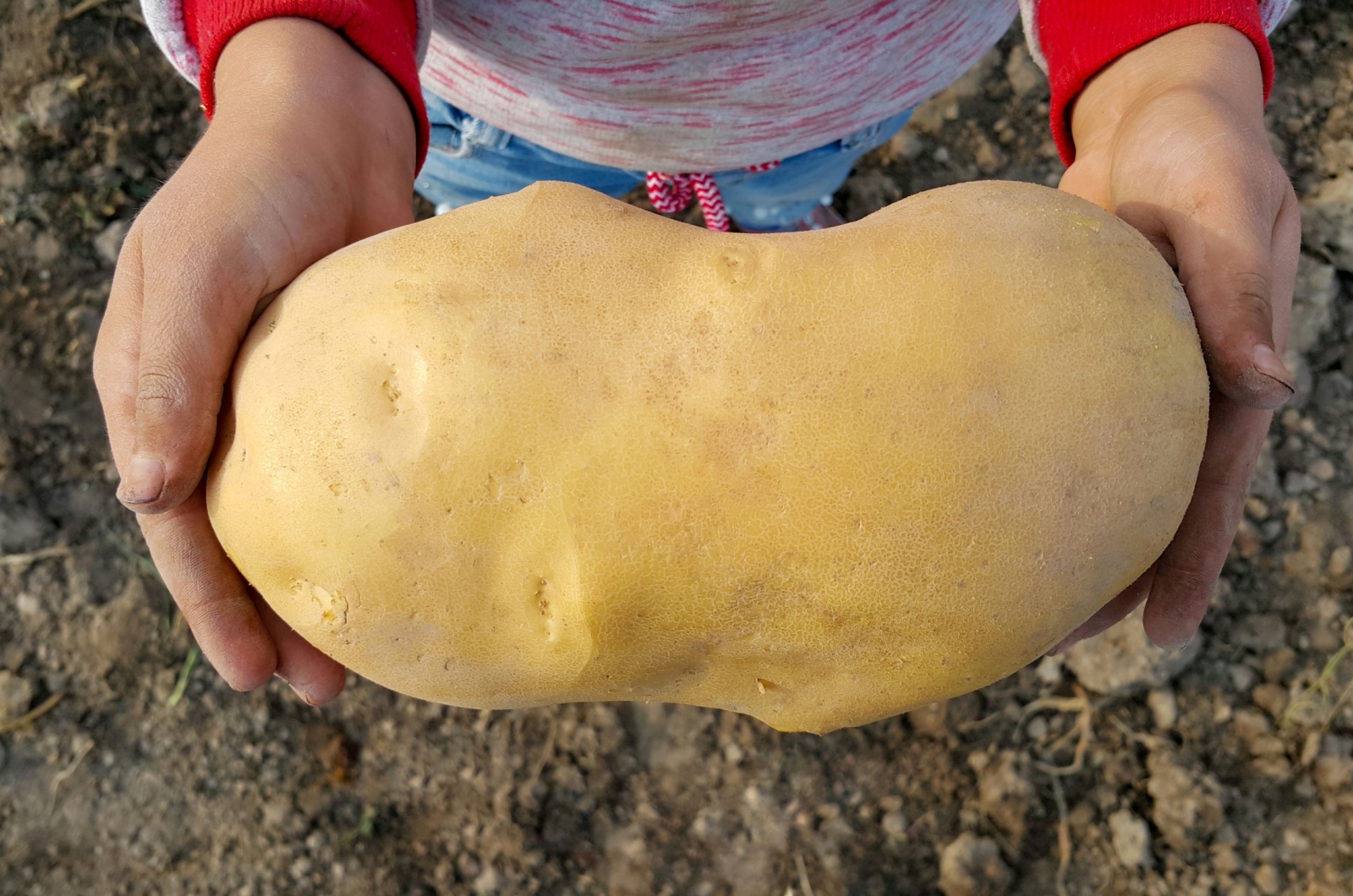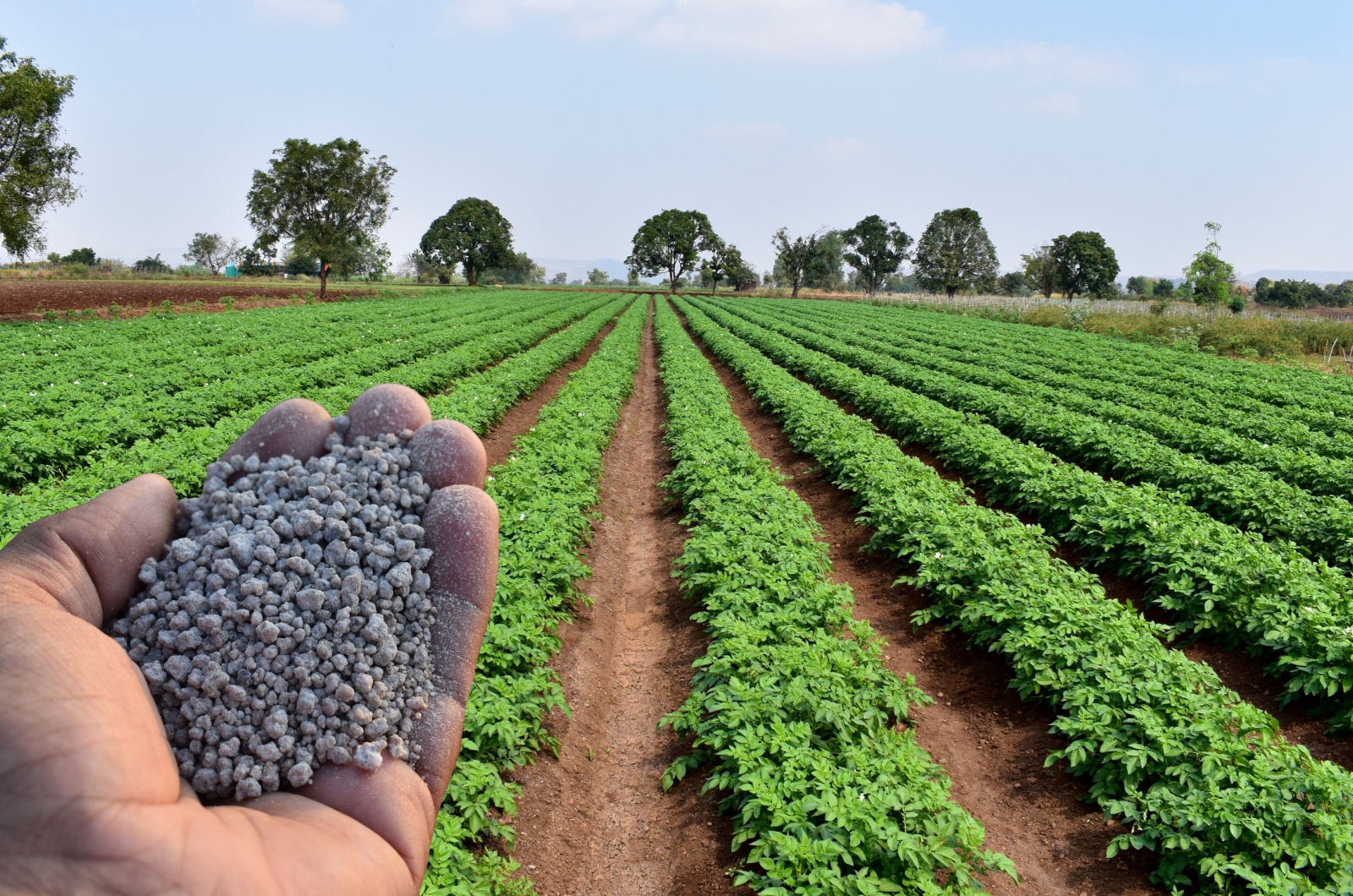Potatoes are wonderful, aren’t they? They’re easy to grow and taste great in so many dishes. But if you want your potatoes to really thrive, you need to know when and how to fertilize them properly.
As someone who’s spent more time in the potato patch than I care to admit (Colorado potato beetles gave me a hard time), I can tell you that getting it right makes all the difference.
Although fertilizing potatoes might seem like a simple task, it can be pretty messy if you are not careful. And speaking of mistakes, let me save you from the big blunder I once made: thinking that ‘a little more is better’ when it comes to fertilizer.
Spoiler alert: it’s not.
Over time, I’ve figured out how to keep my spuds strong and healthy. No worries, I’ll gladly share all my tricks with you so you can all enjoy some homemade French fries!
First, Find The Right Fertilizer And Use It Properly
Okay, so you won’t use just any old fertilizer that you have in the shed (flower fertilizer won’t do any good here).
Finding the right kind of fertilizer for your potatoes depends on one thing: the nutrient availability in your soil.
Before you start fertilizing your potatoes, it’s a good idea to check your soil’s health (a little check-up goes a long way).
Potatoes love nutrients. At first, they need potassium and nitrogen equally. But as they grow, they get a bigger craving for potassium (just like I crave sweet snacks when watching my fave show).
If your soil test shows a lack of these nutrients, pick a fertilizer that fixes the shortage. If your soil also needs more organic matter or micronutrients, add some compost or manure to balance it out.
Avoid “feed and weed” fertilizers – they can harm your potatoes, and nobody wants that!
Now that you’ve picked the right fertilizer, when should you actually apply it?
About a month after planting, your potatoes will be ready for that nutrient boost. Spread the fertilizer along the rows and then mound soil around the plants.
For a quick nitrogen fix, use enough fertilizer to provide 0.15 pounds of nitrogen for every 50 feet of potato row. You can give them another round of fertilizer two weeks later (your potatoes will still be hungry for more!).
Next, Avoid Overusing It So You Don’t Mess Up Your Potatoes
Less is more in life, even when fertilizing potatoes. Overfertilization is a common potato growing mistake that most gardeners make.
Potatoes might love their nutrients, but too much nitrogen can actually do more damage than good.
When you overload your soil with nitrogen, your potato plants might look super green and bushy.
However, this lushness can be totally misleading! It often means that the tubers (those tasty potatoes underground) won’t grow as well.
Too much nitrogen delays tuber development, so you might end up with smaller potatoes than you hoped for. It can also cause your tubers to have hollow or brown centers, or even make them look funny.
All that extra foliage can be more prone to rot (scary, I know!). And let’s not forget that excess nitrogen can leach into the groundwater and nearby waterways, which isn’t good for the environment.
To avoid all this messiness and get the right amount of nitrogen, use soil test results and adjust based on how long your potato variety takes to mature and the amount of organic matter in your soil.
Early-maturing potatoes need less nitrogen than those that take longer to grow. Similarly, if your soil has low organic matter, you might need a bit more nitrogen compared to soil with plenty of organic matter.
What can we conclude here? I guess that getting to know how much nitrogen your garden really needs will yield you the greatest potato batch in your gardening career!
Related: When Is The Best Time To Harvest Potatoes So You Don’t End Up With Tiny Spuds?



